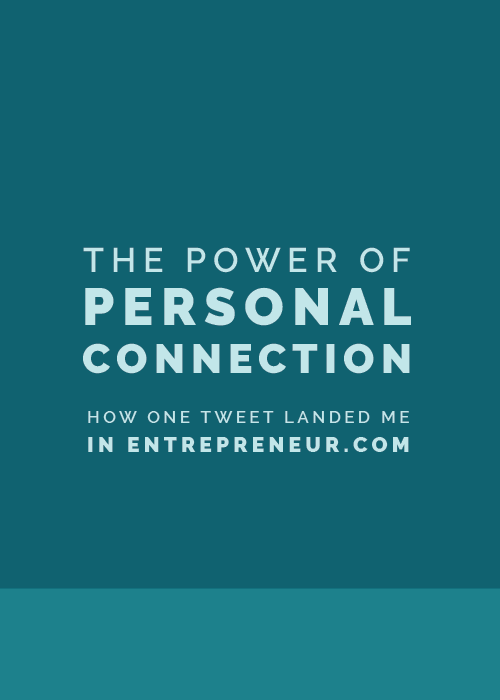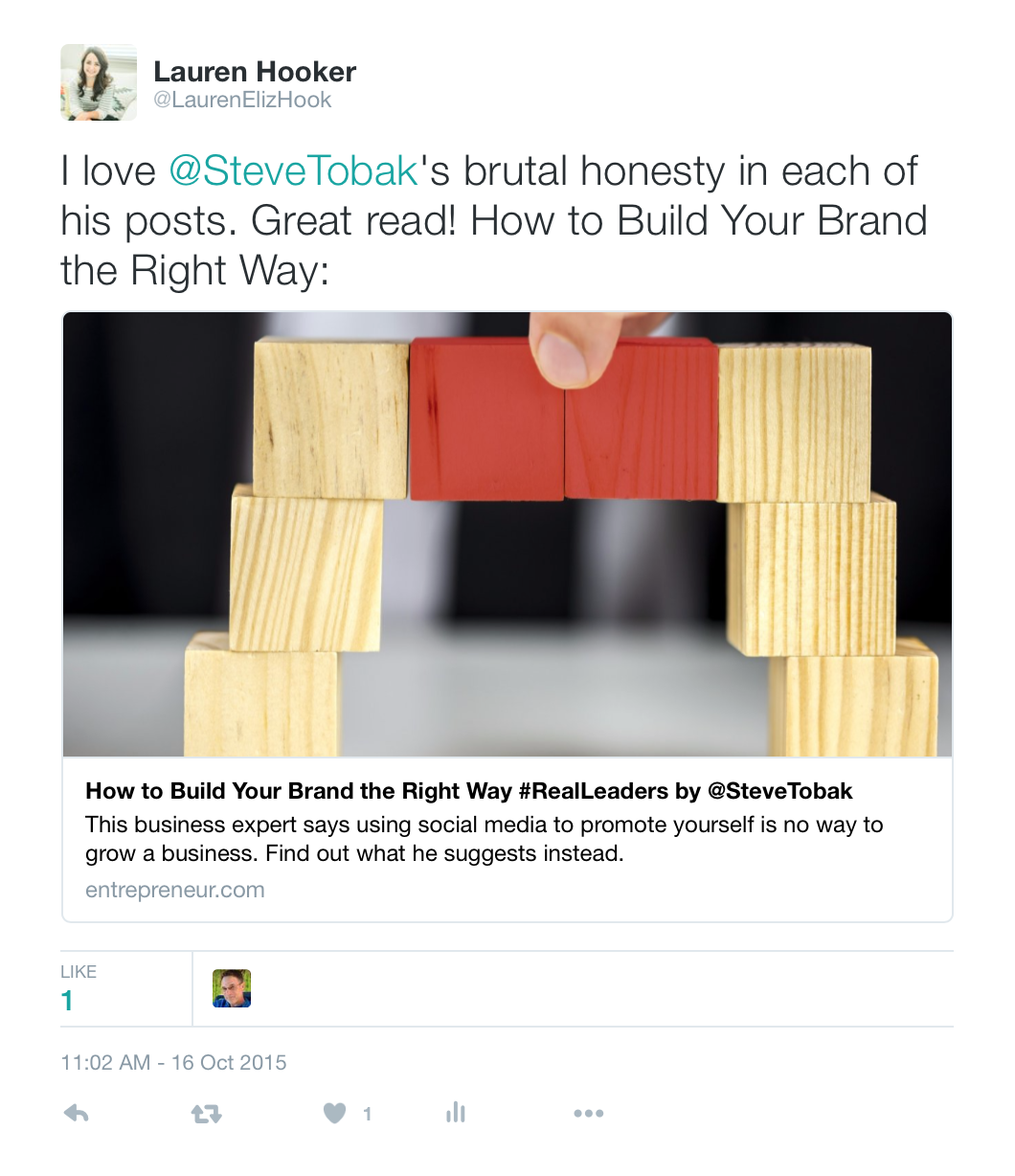If you use content marketing for your business, you’re probably aware that guest posting on other blogs is an effective way to gain influence and boost credibility much faster than simply posting on your blog.
Especially if the website you’re writing for is established and authoritative.
In fact, guest posting is a quick way to build your audience before you actually have an audience of your own, because you’re siphoning traffic from someone else’s site.
Danny Iny is one of many who’s experienced massive growth through guest posting. (And if you’re curious, you can read about his success here.)
Guest posting is a powerful way to gain influence.
And it seems simple enough. You just write a post, send it to a website, and get published… right?
Oh, if only it were that easy!
If you try to go that route, you’ll discover very quickly that it’s incredibly difficult to get your foot in the door with credible sites and begin guest posting for them.
Take The Huffington Post, for example.
If you want to get your post up on their site, you have to send in a pitch through this long Google Form.
If you look closely at the text at the top of the form, you’ll notice a disclaimer:
“Also, please note that, like any publication, we cannot respond to all queries and you'll only hear from us if it's something we're interested in running.”
They can’t respond to every pitch because they receive thousands upon thousands of pitches every single day.
Which means that your post will be one of thousands in a spreadsheet, buried between other pitches for weeks/months. It also means that you won’t even know if/when they’ve seen your post. You’ll just be waiting around.
The pitch process for Entrepreneur.com is very similar.
You have to fill out a form, your pitch is tossed in with thousands of other pitches, and there’s no guarantee you’ll hear back.
So how do you “butt the line” and get your pitch in front of the editors?
Strategy 1: Make a Personal Connection
“It’s not about what you know, but who you know.”
The saying is old and incredibly true.
Your chances for landing a deal, a job, or a guest post increase if you (or someone you know) has a connection with the person in charge of giving it.
And it’s easy to understand why; people trust the recommendation of a close friend or acquaintance.
So if you know an editor (or know someone who knows an editor), you might be able to guest post on a site and bypass the long pitch process.
This was the approach I took last December when I was trying to get my foot in the door and contribute to Entrepreneur.com.
I had been following along with Entrepreneur for years, and I made a habit of sharing my favorite posts.
Many of them were written by Steve Tobak, a polarizing contributor who often writes about leadership and the tech industry. Every time I shared one of his posts on Twitter, I made sure to tag him and give him credit.
One day in October I noticed that Steve not only liked my tweet, but he replied to it.
It was a simple interaction that took place over the course of 2 minutes, but it would prove to be incredibly useful 2 months later.
It was December 22nd, and I had procrastinated on my Entrepreneur.com guest post goal for too long.
But before I submitted my pitch into the black hole that houses all of their other pitch submissions, I decided to reach out to 2 Entrepreneur.com contributors who I’d already been in contact with.
One had included one of my articles in his ebook, and we had previously had a 15 minute phone call.
The other was Steve Tobak.
The emails I sent them were similar and fairly short. I read each of them over at least 20 times before I mustered up the courage to hit send.
Of the 2, I thought the ebook guy would be the most open to my request. After all, Steve Tobak probably interacts with hundreds of people on Twitter; why would he remember me?
Not to mention I happened to send those emails 3 days before Christmas. I was fully expecting to hear back from them once the holidays were over.
So you can imagine my surprise when I received this email from Entrepreneur.com’s editorial director less than 45 minutes later.
I was in! And all because Steve Tobak was willing to stick his neck out there for a random stranger that he briefly connected with on the internet.
A month and a half later, my first post was published on Entrepreneur.com, and Steve was one of the first to reach out and congratulate me.
I tried to offer something in return as a thank you to Steve, and he politely refused my offers of North Carolina barbecue and a personal jet (kidding).
So I did something he couldn’t turn down and purchased his book, Real Leaders Don’t Follow. If you truly want to make a difference in the world of business and entrepreneurship, don’t do what everyone else is doing. This book will encourage you to think critically and break the mold. I highly recommend it!
I think it’s important to note that my initial connection with Steve wasn’t for personal gain; it was sincere. I simply enjoyed his posts and wanted to share them so that others might benefit from them, too.
Networking should always begin with a genuine interest in others. If you’re connecting with others with the hope of them doing a favor for you later on, you’re connecting for the wrong reasons.
These quotes ring true time and again:
“You can make more friends in two months by becoming interested in other people than you can in two years by trying to get other people interested in you.” Dale Carnegie
“The single greatest ‘people skill’ is a highly developed and authentic interest in the *other* person.” Bob Burg
With this in mind, here are a few genuine ways to connect with people:
- If someone has helped you in any way, whether it’s through a detailed blog post, helpful newsletter, or kind word, send them a brief thank you by tweet or email
- Purchase something they’re offering, like an ecourse or a seat to a workshop, and write a testimonial of how you benefited from it. Nothing’s better than receiving an unsolicited testimonial without any ulterior motives.
- Do something kind for them without expecting anything in return
- Consistently comment on their blog and social media posts. People take notice of the same handles when they pop up over and over again, and they’re often more receptive if they’re already familiar with who you are.
After you make a genuine personal connection, then you might consider reaching out to someone to network or collaborate.
And like me, you might be a little nervous about what to say or how to go about it.
Here are a few things to consider as you craft your email:
- Write a personable subject line. People don’t want to open emails that sound like they’re from a robot or a spammer. There’s a person on the other side; make your subject line friendly and personable.
- Address them by name. People respond favorably to their name, so make sure you get their name right. If you’ve been following along with them for a while and have already made a genuine connection, this should be a piece of cake.
- Keep it short and clearly outline the purpose. You can be succinct and still be friendly and personable. Be respectful of people’s time by cutting back on wordy paragraphs and getting to the point.
- Provide examples of your work. Make it easy for people to see your portfolio and read your content by linking to it in your email. It’s more convenient for them and increases your credibility.
Strategy 2: Climb the ladder
Remember the other Entrepreneur.com contributor I emailed? He promptly responded and suggested I go this route.
Many sites want to see that you’ve already had guest post experience. If you start out small and contribute to small publications in your niche, you can slowly climb the ladder and increase your credibility.
Unsure of which publications you should consider?
Search for terms like “guest posts,” “contributors,” and the title of your industry in Google. Ask those in relevant Facebook groups if they (a) follow along with sites that accept guest posts or (b) know of any guest post opportunities.
There’s often a direct link between a site’s web traffic and the difficulty of guest posting for them.
So it’s also helpful to check out a publication’s web traffic at Alexa.com. The lower the rank, the more traffic. Websites that have an Alexa ranking of 100,000 or higher are a great starting place if you’re new to guest posting.
But it doesn’t end once you get your foot in the door with a smaller publication. Now you need to write a piece that will perform well on their site.
Here are a few tips for writing a guest post that will perform well:
- Follow the guidelines and guest post instructions to a T. They have them there for a reason.
- Take a look the most popular guest posts on their site. What is it about them that made them successful? Was it full of actionable steps? Did it have a catchy title? Was it based on a current event? Keep this in mind as you write your post.
- Follow up with comments and shares. Engagement and interaction is important whether you’re posting on your own site or guest posting on another publication.
If your post performs well, the publication will be more likely to accept posts from you in the future. It will also make you look more credible when you include your post in your writing portfolio and appeal to larger publications.
And if you select the right places to guest post, their audience will find your website, your traffic will increase, and your audience will grow.
Whatever strategy you go with, a couple overarching statements ring true.
- Success starts by taking action.
- Effective networking begins with a genuine interest in others.
- You never know unless you ask.
Have you guest posted for another publication? How did you get your foot in the door?









































